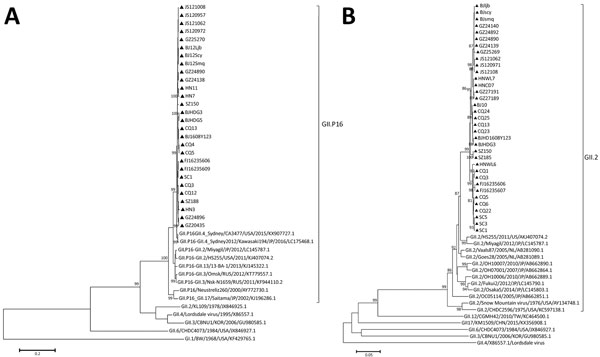Volume 23, Number 7—July 2017
Dispatch
Norovirus GII.P16/GII.2–Associated Gastroenteritis, China, 2016
Figure 2

Figure 2. Phylogenetic analyses of the newly identified GII.2 noroviruses in China, reconstructed based on RNA-dependent RNA polymerase (A) and open reading frame 2 (B) with a representative norovirus using the neighbor-joining method with datasets of 1,000 replicates in MEGA 6.0 software (http://www.megasoftware.net). Triangles indicates the positions of the GII.2 norovirus newly identified in 8 cities from 7 provinces. Scale bars indicate nucleotide substitutions per site.
1These authors contributed equally to this article.
Page created: June 19, 2017
Page updated: June 19, 2017
Page reviewed: June 19, 2017
The conclusions, findings, and opinions expressed by authors contributing to this journal do not necessarily reflect the official position of the U.S. Department of Health and Human Services, the Public Health Service, the Centers for Disease Control and Prevention, or the authors' affiliated institutions. Use of trade names is for identification only and does not imply endorsement by any of the groups named above.